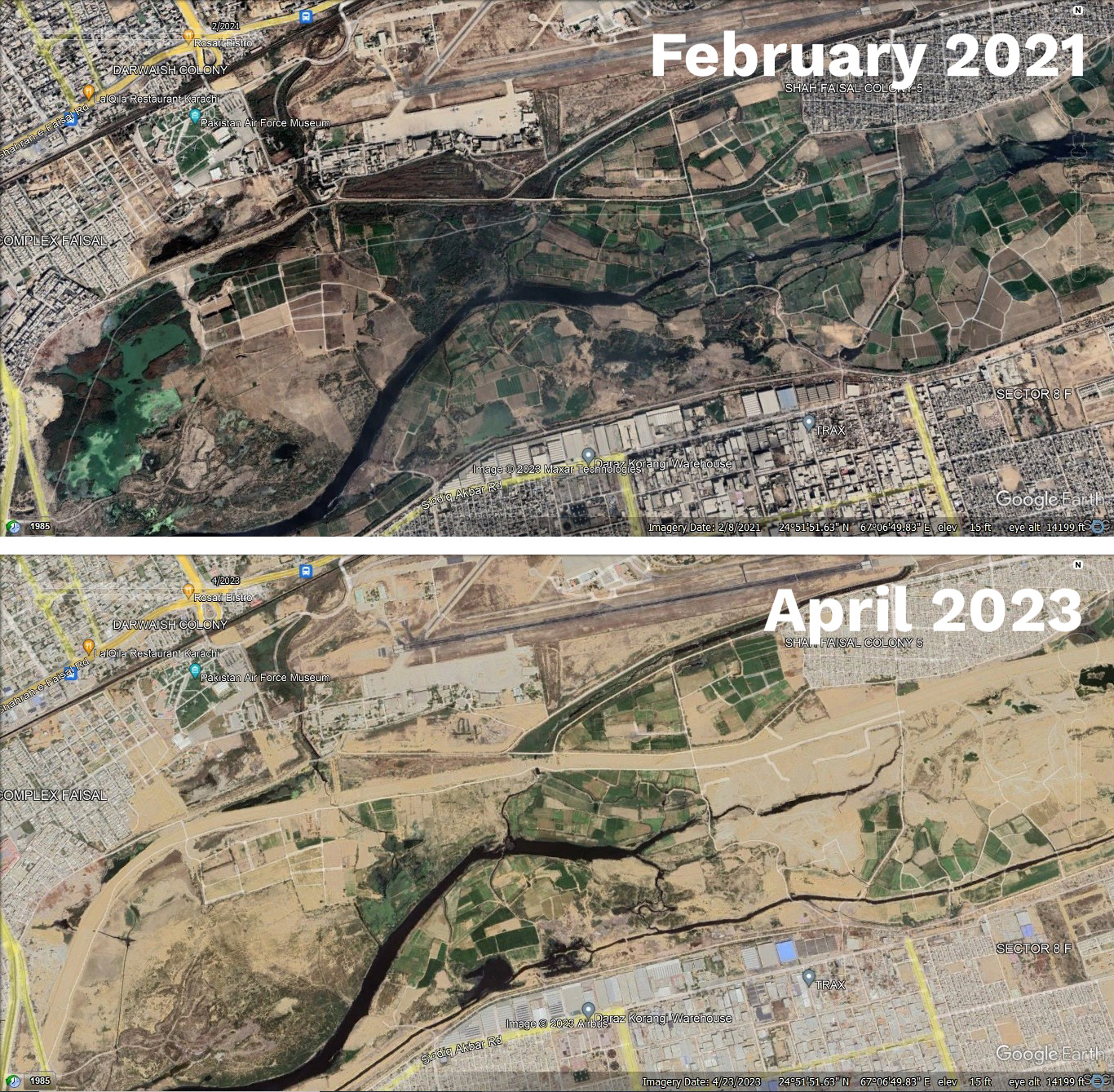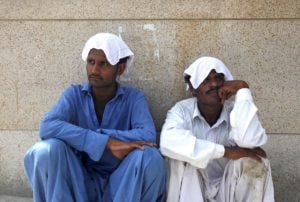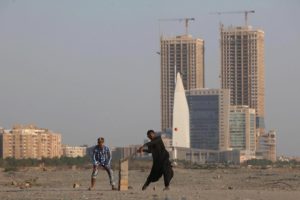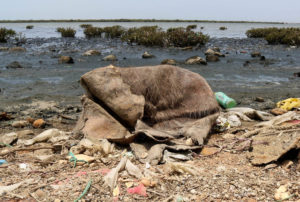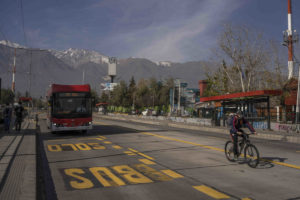As the impacts of climate change are being increasingly felt around the world, the situation is made worse by bad urban planning. Pakistan is no exception, as unplanned urban sprawl is eating into many of the country’s green spaces and natural waterways.
The under-construction Malir Expressway in Pakistan’s largest city, Karachi, is a part of this sprawl. A public-private partnership project of the Sindh Government, the six-lane, 38.75-kilometre-long expressway is to be built on the floodplain of the Malir River, running along its left bank. The route will connect the new urban communities of Bahria Town Karachi and DHA City on the north-east periphery of Karachi – both elite and middle-class gated housing estates built on land that was once home to low-income communities – to the older and established Defence Housing Authority in the south. But all this comes at a cost to the city on many levels.
‘Wiping out’ Karachi’s largest green space
There are serious concerns over the adverse environmental impact that will be wrought by the Malir Expressway. Most of Karachi is severely lacking in green space, with only a few small parks of one or two acres. Bin Qasim Park, one of the city’s largest, covers 80 acres. In contrast, green space in the Malir area, stretching from Korangi Crossing in the south-east to Shah Faisal Bridge in the east, measures 4,300 acres, according to research conducted by Karachi-based architect and environmentalist Arif Belgaumi.
But construction of the Malir Expressway will result in the surrounding areas being reclaimed for commercial development. In an article last year, prominent architect and urban planner Arif Hasan wrote: “As a result of permission for the building of real estate along the corridor, this lung of the city will be wiped out forever.”
Destroying green space can make extreme heat more dangerous. When Karachi experienced an intense heatwave in 2015, the Ministry of Climate Change’s technical report on the crisis stated that the ‘urban heat island effect’ was a compounding cause, a phenomenon in which urban areas are warmer than their surroundings owing to built surfaces absorbing heat, and a lack of the cooling effect of vegetation. If the Malir Expressway is built, it will inevitably be followed by urbanisation of the surrounding countryside, which will fuel the urban heat island effect.
While many cities around the world are taking steps to help improve air quality and cool the urban environment, such as by planting trees, installing green roofs, adding green spaces and improving layouts of cities – in Pakistan we see the exact opposite happening.
Eliminating green spaces also hurts biodiversity. Writing for Dawn, Muhammed Toheed notes that the Malir Expressway EIA report claims the project site lies in a “landscape with poor ecosystem”, suggesting that ecological damage from the project will be limited. But ecologists and wildlife experts have said that the Malir area is rich in wildlife, being home to 176 species of birds – biodiversity that could be lost to development.
Expressway will worsen Karachi’s urban flooding
Worryingly, the Malir Expressway could also worsen flooding in Karachi. The Malir River overflowing is one of the key causes of urban flooding in the city, and experts say that climate change will likely make incidents of heavy monsoon rainfall more frequent in South Asia. According to Belgaumi, the expressway, which is being built on the Malir River’s floodplain, will block the natural flow of rainwater during heavy rainfall, reducing the river’s capacity to carry rainwater away.
While the city has promised to construct drainage channels and culverts for the Malir Expressway, Belgaumi says these will not be enough, and that the consequences of an actively blocked drainage channel will be nothing less than catastrophic.
Karachi is not alone in this, with the expressway representing a microcosm of a bigger problem arising across South Asia. For example, when monsoon rains caused devastating floods in Bengaluru, south India, in 2022, meteorologists said that poor urban planning was largely to blame for the damage.
Legal irregularities and dismissal of locals’ concerns
An Environmental Impact Assessment (EIA) report for the Malir Expressway, conducted by a contracting company, was submitted for approval to the Sindh Environmental Protection Agency (SEPA) in October 2021.
Under the Sindh Environmental Protection Act, 2014, in the course of reviewing an environmental assessment, SEPA must invite members of the public to comment on any EIAs conducted. Yet while many concerned citizens, environmental experts and local farmers have submitted written objections against the Malir Expressway project’s EIA, and participated in a public hearing, these objections were never taken into consideration by SEPA.
Additionally, according to the 2014 Act, no proponent of a project can commence construction or operations before filing the necessary environmental assessments. But the EIA report for the expressway was published months after the project was initiated.
The EIA report mentions the presence of Sindhi and Balochi tribes that identify as Indigenous, who would be displaced from their intergenerational land. But so far, SEPA has not publicised a Land Acquisition and Resettlement Policy. This suggests the project is being undertaken in a way that is not only against the law, but also in contravention of the UN Declaration on the Rights of Indigenous Peoples, Article 10 of which states that Indigenous peoples shall not be relocated “without their free, prior and informed consent”.
The lack of public participation also goes against the Rio Declaration on Environment and Development, Principle 10 of which states that environmental issues are “best handled with the participation of all concerned citizens”, and that at the national level, “each individual is to have the opportunity to participate in decision-making processes”. In failing to take into account the voices of local farmers, the state is demonstrating that it considers the rights of some more significant than others.
Much of Pakistan has seen the land-use profile of agricultural districts changing from agricultural to urban. In a petition against the Ravi Urban Development Project in January 2022, the Lahore High Court observed that while unregulated urbanisation of agricultural and cultivated farmland and forested areas has been taking place since 1972, no rules have been implemented to control the acquisition of agricultural land for the purposes of urbanisation. While development brings advantages, these must not be brought at the cost of devastation to local communities.


